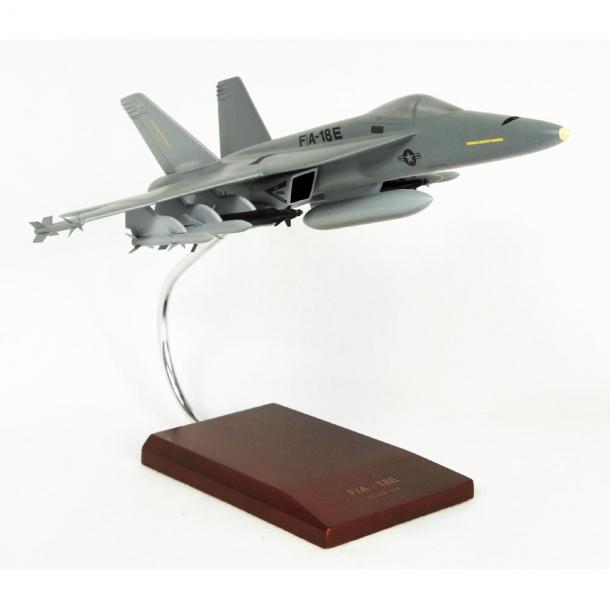F/A-18E SUPER HORNET MODEL

The Boeing F/A-18E Super Hornet is a carrier-based multi-mission strike fighter that entered service with the United States Navy (USN) in 1999. It is a larger and more advanced version of the night strike F/A-18C/D Hornet. The Super Hornet provides the battle group commander with a platform that has range, endurance, and ordnance carriage capabilities comparable to those of the retired A-6 Intruder.
Ordered from McDonnell Douglas by the USN in 1992, the Super Hornet first flew in November 1995. It is informally referred to as the Rhino, to distinguish it from earlier model legacy Hornets. Initial production began in 1995. Flight testing started in 1996 and ended in 1999. Testing involved 3,100 test flights covering 4,600 flight hours. The aircraft passed the Navys operational tests and evaluations in February 2000, and has replaced the A-6 Intruder, S-3 Viking and KA-6D. The Super Hornet is capable of performing a broad spectrum of roles, including day/night strikes with precision-guided weapons, anti-air warfare, fighter escort, reconnaissance, forward air control, close air support, suppression of enemy air defense (SEAD), maritime strike and air-to-air refueling.
The Navys Strike Fighter Squadron 115 was the first unit to bring their Super Hornets to combat. On November 6, 2002, in support of Operation Southern Watch, two F/A-18Es conducted a “Response Option” strike on two surface-to-air missile launchers at Al Kut and an air defense command and control bunker at Tallil Air Base. It was the first time 2,000-pound JDAM bombs were dropped from the F/A-18E in wartime. During Operation Iraqi Freedom, the Super Hornet flew close air support, strike, escort SEAD and aerial refueling roles.

Отзывы ещё не добавлены